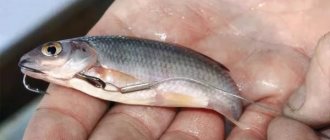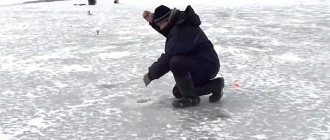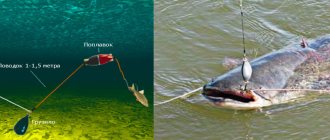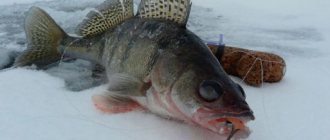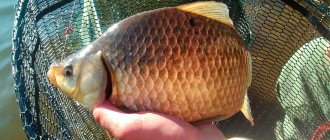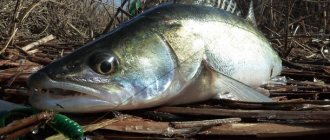Although balancers are produced by a variety of companies, all models can be divided into 3 types.
In our article today, we will discuss in detail fishing with a balance beam in the summer. In particular, we will answer the following questions:
- What is a balancer?
- What types of balancers are there?
- How is fishing carried out?
- How does summer fishing differ from winter fishing?
Types of balancers
Although balancers are produced by a variety of companies, all models can be divided into 3 types.
- The first type is with plastic wings at the back;
- The second type is with a fur tassel, in the same place;
- The third type is silicone, which have been sold not so long ago.
The following varieties are also available:
These baits are produced in different colors, and, as a rule, when going fishing, you never know what predators will like exactly today. Therefore, it is recommended to replenish your arsenal with several options when preparing for fishing.
What is a balancer, its advantages
Since the appearance of balancers on the domestic market, they have undergone a slight evolution, and the first primitive baits have been replaced by high-quality and beautiful ones.
The balancer is an artificial bait made in the shape of a small fish. Single hooks are soldered into the body at the nose and tail. There is a ring mounted on the back, which is designed to attach the bait to the fishing line. There is another ring on the belly, to which an additional treble hook is attached.
Balancers are produced in various colors and sizes. The choice of suitable bait depends on the fishing conditions, as well as on the type of predator that you plan to catch with its help. The ring for attaching the main fishing line is soldered into the body of the bait in such a way that after hanging the fish takes a position close to horizontal and maintains balance.
In water, the action of the bait is close to the movements of a wounded or sick fish. The attractiveness of animation for a predator directly depends on the skill of the fisherman.
Balancers are designed for vertical fishing, unlike spinning lures. That is, you can fish for them from ice in winter fishing or from a boat in summer, lowering it into the water column.
Fishing with a balance beam has many advantages over spinning fishing with classic fishing. The fact is that it can be used in conditions under which it is impossible to bait the bait horizontally.
For example, in areas where there is a lot of underwater vegetation, snags, stones and other obstacles, there is a very high risk of breaking the bait when performing horizontal wiring. To fish vertically using a balance beam, you just need to find a small window of clean water. In such a place you can effectively catch predators without fear of the gear breaking.
To fish vertically using a balance beam, you just need to find a small window of clean water. In such a place you can effectively catch predators without fear of the gear breaking
Compared to vertical spinners, balancers have a more beautiful appearance and a realistic, attractive game. By these parameters they clearly win.
In addition, balancers have many types of shapes and colors, so you can find the best bait for any conditions and a particular predator.
Mainly, perches and pikes are caught using balance beams, which hunt in dense vegetation in the summer, but its effectiveness is also noted in fishing for pike perch, asp, ide, etc. But for catching these predators, other places should be chosen. Also, some fishermen successfully fill their cages with 3-4 kg carp.
- Fish respond best to bright red baits in cloudy weather; on a clear sunny day, preference should be given to balancers with pale shades.
- You should not make too short pauses between swings - it is advisable to wait at least 10 seconds.
- Change your fishing tactics more often. Fishing with a balance beam requires experimentation and creativity.
Summer balancer. Paradox or reality?
About five years ago, at the beginning of summer, I once fed bream on my favorite river, but either the bream had not yet left the spawning spree, or it simply did not want to stay in my smokehouse, but it did not bite at all, and did not even show up. After fiddling with different baits and attachments for a couple of hours, I gave up on this bream venture and began to think about what to do so that my best fishing hours would not go to waste.
The decision came by itself, or rather, it was brought by the perches, who here and there from time to time loudly smacked their lips and chased the fry and minnows. With a “light movement of the hand,” I tore the float with weight from my match rod (length 5.4 m), rummaged through my fishing bag and found a box containing small vertical lures with soldered single and double hooks. Actually, these are winter baits, but I often use them in the summer - for fishing with a bait and float, for vertical lures using a long rod. I tied on a small spinner and started catching perch quite successfully. Having caught a dozen edible-sized fish and lost the initial excitement, I began experimenting with the color and size of spinners. In my camping box there was also one balance beam 5 cm long. The hanging tee with a phosphorus droplet was a little rusty, but I cleaned it with a knife blade and, not counting on anything in particular, decided to try it out in action. To my surprise, the perches reacted even better to the balancer than to the vertical spoon. More precisely, they were extremely interested in the tee with a droplet, there were a lot of bites, but there were also a lot of fish landings. Maybe this story would have ended there if the asp had not shown itself in the middle of the river, 25 meters from me. By inertia, I threw my balance beam towards the splash, it fell into the water, I managed to pull the line and was just starting to think what to do next, when I felt a strong blow, hooked and pulled out a foal weighing a little more than a kilogram. This incident led to many experiments in almost all the reservoirs where I have fished in recent years, and over time, the balancer for me became the same spinning bait as a “spinner” or a twister. Let me clarify: jig bait. It often happened that the balancer was the only thing that perch and pike perch reacted to. I will try to tell you about my observations and experience of using balancers in the summer, and maybe you, too, will discover this most interesting and, by the way, very effective type of fishing. Let's start with the shapes and sizes of balancers. The balancers with a length of 4.5 and 6 cm turned out to be the most catchy for me. Depending on the shape, they weigh from 11 to 20 g, this is enough to tap the bottom even in the middle current and at depths of about 10 m, if necessary. Lures of this weight can be thrown quite far, and the fish (we will talk mainly about perch and pike perch) grab them much more confidently. In my fishing box, of course, I also have 3-centimeter balancers, but I use them mainly on small rivers where the predator stays in shallow water, when fishing for perch in “windows” in thickets or snags. Small balancers are too light for good casting, especially in windy conditions. When fishing even in a small current or at depths of over 3-4 m, they no longer play as they should. Although the shape of the balancers from different manufacturing companies differs, some common features can still be found. As always, I simplify everything and divide all balancers into two groups - standard and weighted (popularly called “catfish”). To fully understand and experience fishing with a summer balance beam, you need to test how baits of different shapes behave. Ask why? Yes, if only because the weight of a 5-centimeter balancer of a regular shape (round, almost cigar-shaped body) is 13-14 g, and a “catfish” (the head of the bait is enlarged and the whole body is flattened) is already 19-20 g. Therefore, for fishing with During the course I only use weighted balance beams. In addition, with flattened lures you can “walk” in the current almost on the spot, but we’ll talk about this a little further. So far I have not found a use for large (8 and 9 cm) balancers, already weighing 26-35 g. I admit that for catching large pike perch and trophy perch in strong currents, these baits work excellently, but, to be honest, I haven’t fished with them yet I tried it, since everywhere I made do with smaller balancers. If you ask me what brand of balancers I use, I will remind you that since I am an expert of the Latvian company SALMO, it is quite logical that I fish with the balancers of this company. You are familiar with them under the name LUCKY JOHN. I won’t say that lures from other manufacturers are worse or uglier, but I know everything about the balancers I use and am sure that they will never let you down. First of all, I prefer those baits that closely resemble real fish - with light silver sides, a gray back (redfish fry), greenish (roach, dace), brownish (rudd, crucian carp), red tail (different tones), sometimes gray or brown. And only when for some reason these baits do not work, I put on bright (“parrot”) balancers. It’s rare, but it happens that a monochromatic bait color works, so you should never give up experimenting. But life shows that you can work normally only with those baits that you like, so if you think that the fish should grab the red balance bar, then until you yourself are left without a fish several times in a row, no one else will be able to convince you otherwise . Oddly enough, almost 90% of all the perches I caught on balance beams are less than 300 g. Almost all rudd, bream and bream, which really like the summer balance beam, are small (up to and about 1 kg). Zanders choose to attack not the balancer itself, but a tee suspended from below with a phosphorescent drop. When fishing with balance beams in the summer, at first most of the fish disappeared halfway. The reason turned out to be that the winter balancers have small thin tees that fit perfectly into the fish’s mouth or lip, but since in winter we fish with our hands, we feel the resistance perfectly and can regulate the speed of fishing, even if the hook only grabbed the very edge of the perch lip. And in the summer we hook fish with a rod and fish with a reel, and even though the reel brake is well adjusted, the contact with the bait is still not so sensitive. At the very beginning of my tests, I began to replace the tees with thicker ones (one size, and sometimes two more) and achieved that the number of bites did not decrease, but the number of fish caught doubled. A thin hook simply partially or completely cuts the fish's mouth, as a result of which the fish is easily freed from it. In fishing stores you can buy tees with phosphorus drops of different colors, and this is very useful, since sometimes bait manufacturers hang tees with drops of some unimaginable colors under the balancers. If you choose tees with drops of white, combinations of white with red, white with green, you will not go wrong, these colors work in 9 out of 10 cases, which cannot be said about light green, purple and even red drops. Here is a field for experimentation. Maybe someone will disagree with me, but I take the choice of a rod and reel much easier than the choice of lures - the main thing is that the rod “fits in my hand” and works the way I like. For my summer “balancing” I use two rods. When fishing with small (4 and 4.5 cm) balance weights, I use a lightweight rod of medium class and quality Elite Micro JIG with a length of 2.7 m (my favorite for perch fishing), and although the form states that its test (maximum weight of the bait thrown ) - up to 10 g, I have been successfully fishing with baits weighing up to 15 g for three years now. Using heavier baits is already dangerous for the health of the rod. Let me explain what dictated this choice. Firstly, fishing for me is a recreation and lifestyle, and not a fulfillment of the food program, although I love to eat fish. I just really like to feel the resistance of even a small fish. Secondly, no other rod in this class shows so clearly every movement of the bait, every even slightest bite, which can be very important for catching cautious perch and pike perch. I would like to note that light rods are very fragile only at first glance, but in reality the fish will definitely not break your spinning rod; 95% of rods are broken by fishermen themselves. Another rod - for fishing with larger baits (and hunting for large fish too) - I have medium hardness, this is a Grand Target with a length of 2.74 m and with a test of 5-28 g. It is comfortable, it is pleasant to hold in the hand, I use it I use it when I want to fish with balancers 5 cm long or longer (their weight is approximately 13-14 g). When working with such baits, the rod clearly shows every “step” of the balancer and every, even the slightest poke of the fish. My opinion: that for any type of bottom spinning (fishing with jig baits, balancers, with lead systems), the rod works normally only when the weight of the bait is 2/3 or more of the specified upper test of the rod. I don’t remember where I heard the formula that I first laughed at - that you need to add both numbers of the test and divide by two, then you will get a more or less optimal test, but it is close to the truth. I feel about the same way about choosing a reel for a spinning rod - the main thing is that the angler trusts his reel, that the brake always works when needed, that the line is wound evenly and the reel stroke is quiet and pleasant, and under what name this reel is sold, personally not very important for me. One thing is clear: if you can try to save money on a rod, you can’t do this on a reel, since the reel in a spinning rod is 60% of success. Therefore, I installed high-quality reels from the elite Grand series on both spinning rods. Considering that the intensive working life of a reel is on average 5 years (with 5-10 fishing trips per month), and mine have worked for three seasons, I can’t say a single bad word about them yet. True, after every season of intense fishing, I take all my reels for a technical inspection to a specialist, and one such technical inspection costs 5% of the cost of the reel, but then for the whole season I don’t even have to think about the reels, they work, and that’s all. It would be dishonest not to say that all my gear is from SALMO, but all of the above applies to most fishing equipment found on store shelves. As for the fishing line for balancer fishing, I opted for the Elite Braid cord. In general, there are two requirements for braided fishing line: it must be perfectly round, wear-resistant and meet the specified characteristics. At first I was against the “braid”, but after I began to get involved in jig fishing and fishing with a summer balancer, I completely changed my opinion, since only thanks to the minimal stretch of the “braid” you can see micro-bites on the rod from both 20 and 40 m , and if you correctly select the weight of the bait, the thickness of the fishing line and the test of the rod, then you can achieve ideal sensitivity of the bait in any wind and current. For fishing with a balancer, I myself use “braids” with a diameter of 0.10 mm (4.3 kg) on a light spinning rod and a diameter of 0.14 mm (7.35 kg) on a heavy spinning rod. Let me remind you once again that we are talking about a specific fishing line, since the diameter of fishing lines from different manufacturers indicated on the packaging, unfortunately, very often does not coincide with the real one. Therefore, if there is such an opportunity, then before purchasing, compare fishing lines of the same diameter from different manufacturers, and for microjig and balance fishing, choose the thinnest one. You will not regret. The fishing process itself is in many ways similar to jig-spinning, but the “balancer-spinning” still has some features. Let's start with fishing on the river. Retrieving the bait is slightly different than when fishing from the shore or a boat moored to the shore. Let's assume that the river bottom here is sandy, gravel or clay, but not muddy and without dense vegetation. We choose a balancer 5 or 6 cm long, depending on the expected depth, strength of the current and what kind of fish we are going to catch, and first make a dozen short casts (15-20 m) against or across the current. After casting, let the balancer sink to the bottom, tighten the line and make a small swing to the side with the tip of the rod, as if parallel to the surface of the water - in this case, the balancer only slightly comes off the bottom. Pause for 2 seconds. and take the next “step”. In this way, “walking”, you can ideally probe the bottom, find out where the edges and shallows are, and at the same time find out whether there are active fish in a given place. It is advisable to make casts according to a certain pattern, in a fan pattern, so as not to leave a single section of the river unchecked. The current, of course, slightly carries the balancer, it makes such zigzag jumps that the fish really like it. These “steps” should not be too large; it is better to take 4-5 small, quick “steps” than two large ones, since often this kind of prey jumping along the bottom excites predators more than a quickly running away one. You will not confuse the bite with either a hook or the impact of the bait on the bottom. I have always been surprised how the fish manages to grab the tee at the bottom of the balancer, because in fact, with such wiring, it almost does not come off the bottom, “steps” perfectly straight (nose first and does not spin), but somehow perches and zanders manage to fall precisely on tee. They apparently chase the bait jumping along the bottom, wait for the moment and during a pause they simply suck in the tee. I tried to think like a fish, and came to the conclusion that if it is small, it intends to take away its prey (tee) from the hunter-balancer, and if it is larger, then it intends to attack the hunter himself. It is very strange, by the way, to say that in all the years of fishing, not a single fish (except for a couple of pike-perch) has ever been caught on the front hook of the balancer in the summer. If you are fishing on a river from an anchored boat and casting the bait downstream, then from time to time it is advisable to alternate “lateral” strokes of the rod with upward strokes. As a result, the balancer bounces, and the current carries it almost to its original position. Here is another advantage of the flattened body of a weighted balancer - the current presses it down more. This way you can slow down the retrieve without reducing the frequency of jumps. Perch, and especially pike perch, really like this maneuver. If you managed to find a school of perch and pull out 3-5 or more tails in a row, then there is a very high probability that the remaining perches, following those you caught, have already approached the boat itself. It’s worth playing with a balancer at the bottom along the length of the rod, and usually 2-3 striped predators greedily grab the bait. Lake summer fishing with a balance beam differs from river fishing mainly only in that it is necessary to use smaller baits more often, especially if the lake is small, and there already 10 perches are considered a school. On large lakes and reservoirs this is not so important, there the perch is still much more predatory and it is easier to irritate it; there the main problem is usually to find fish. Personally, on lakes I always use a vertical retrieve (swinging the rod upward), since with a “nailed” hand these jumps can be 20-30 cm high and no more than half a meter long. And if you “walk” the entire edge and depth changes like this, then predators simply cannot remain indifferent. Catching an active perch over the grass is a different story. You yourself know that perch sometimes go hunting in shallow bays, narrow channels and channels, where the entire bottom is covered with algae, and above them the water is 1-2 m high. These are ideal places for fishing with a “spinner”, but if If you don’t have them with you or the perch simply doesn’t react to them, then my advice is to try fishing with a balance beam. Take a balancer of an ordinary shape, 4-5 cm long, and... throw it directly into the “cauldron” or other promising place. In the last stage of flight, the line is stretched, and almost from the first second the balancer is immersed in the water, you begin to play with it. With a good rod, every movement of the bait is perfectly felt; the retrieve looks like the accelerated movement of a jig bait, only it does not touch the bottom. The most amazing thing is that all kinds of fish take this bait - perch, pike, rudd, and even bream. Knowing how this happens, I want to remind you once again: before you get carried away with casting bait to the other shore, check what is going on under the boat, in each grass “window” and at the reed wall, especially if the depth there exceeds 1-1.5 m. I’m not saying that summer fishing with a balance beam is a revolution in spinning fishing, but I think everyone will agree that too little attention is paid to this interesting and very catchy bait during the open water period. I hope that I managed to instill in the reader at least the slightest interest and desire to try this most exciting fishing. If so, I will be glad.
Choosing the right balancers
Fishing for perch takes place in quiet and calm areas where the current is either completely absent or very weak. Only in such conditions can the game of the bait be revealed in all its glory. When fishing from a boat, it makes sense to use jerking tactics, when the bait moves through all layers of water: it either sinks almost to the very bottom, then gently rises to the very surface, playing with all the colors in the middle layers.
You should look for the voracious predator at a decent depth. Light and heavy balancers are suitable for this type of fishing. The former stay in the field of view of potential prey longer, while the latter products are able to demonstrate brighter and more attractive game, especially closer to the bottom. It turns out that light baits are suitable for fishing in the upper and middle layers of water, and heavy balancers are effective when fishing in the bottom level.
The size of perch balancers ranges from 3 to 5 cm. But in the summer it makes sense to start fishing with smaller specimens. Winter models can also work, but you need to take into account that the peak of predator activity occurs in the second half of spring and summer. At this time, it is best to catch it on bright patterns.
The correct action of the bait is important: after a jerk, the balancer should not just fall, but nod with the tail, but not fall over. Therefore, when choosing a particular model, you should pay great attention to the tail part - it’s good if it is made with a brush. It is important that the tail is not attached rigidly.
There is a saying: “What for a goat’s button accordion, she’s already cheerful.” You can’t say better about fishing with a step or a balance beam. There are wobblers. After thinking about it, people made a version of a wobbler for vertical wiring. Why reverse evolution?
Shchukar
Shchukar
Just the same - exemplary fishing for the use of non-standard fishing methods, which many consider a summer nod:
fakir
Shchukar
Interesting topic! I always wanted to try it, but not with a nod, but with a spinning step.
Doesn’t it work near grass and snags in the summer?
There is a saying: “What for a goat’s button accordion, she’s already cheerful.” You can’t say better about fishing with a step or a balance beam. There are wobblers. After thinking about it, people made a version of a wobbler for vertical wiring. Why reverse evolution?
About driftwood - it works. but in the summer, there are many more holds. because this snag is tempting to shine
In the grass - it doesn’t work, it’s banal, there’s nowhere for it to “disperse” But it can be nearby. But the same problem. I’m not an oligarch, so I prefer to fish with balance beams in open water in the spring, and in the summer, only from a boat.
vyacheslav
There is a saying: “What for a goat’s button accordion, she’s already cheerful.” You can’t say better about fishing with a step or a balance beam. There are wobblers. After thinking about it, people made a version of a wobbler for vertical wiring. Why reverse evolution?
About driftwood - it works. but in the summer, there are many more holds. because this snag is tempting to shine
In the grass - it doesn’t work, it’s banal, there’s nowhere for it to “disperse” But it can be nearby. But the same problem. I’m not an oligarch, so I prefer to fish with balance beams in open water in the spring, and in the summer, only from a boat.
Cousteau
GKTOTQ
Blocked
This kind of tackle is also called TRAGGING, RESINS (this is when one fisherman catches). . Baler
With paired spinning rods you can successfully catch live bait, for example, the same pike. A live fish on a hook is lowered to the edge of aquatic thickets and into gaps among them, to a washed-out shore and to other places where predatory fish are likely to camp. Fishing line is usually used with a diameter of 0.6-0.7 mm, leashes with a length of 0.25-0.35 mm, single-, double- and triple-hook hooks.
January 25, 2021 Yuran
Advantage of the balancer
My partner and I discovered one advantage of the balancer, which more than outweighs all the disadvantages of this bait. This advantage, of course, is quite controversial and “slippery”, but was deduced on the basis of our diary entries, recording all the nuances of zander lures: the balancer very often causes the grip of a passive pike perch faster than a vertical spoon.
Using numbers arbitrarily, one can draw the following parallels. If the balancer causes a grip on the fifth or tenth cycle of the game, then the vertical in the same conditions only on the eighth or thirteenth. How important this is when actively searching for sluggish fish settling in their sites can be easily calculated, knowing the number of hours of a short winter day and the number of holes required for a successful search.
But in recent winters, pike perch have been sluggish for most of the season due to extremely unstable weather. This winter, the fish quite rarely came to their crowning places of fat: exits from pits, edges of the riverbed in reservoirs and underwater mounds. Usually they found fish in completely different areas: fairly flat plateaus with depths of 5-7 m. However, upon detailed study of the bottom in such areas, they discovered that bites on such plateaus were near certain “anomalies”: a small groove-depression, a single writhe or poorly readable pit.
But pit is a strong word. It’s just that on a plateau with depths of 5.5-6 m there was a vast, insignificant oval depression of the bottom up to a maximum of 6.5 m. And the bottom of this depression was completely flat. In such areas, only one pike perch was taken from a fishing hole, very rarely two.
Maybe the pike perch was simply flying across the plateau for small change and our paths accidentally crossed? It’s unlikely, because almost all the raised fish were covered with leeches, which indicates that the pike perch was defending itself. I had to look for fish in all directions, and rather haphazardly, knocking out pike perch with the number of holes drilled.
Read! Tips for catching large roach in winter
Fishing with a balance beam in summer
January 25, 2021 Yuran
Often the balancer is presented as a sort of finely balanced bait, and it is harmful to interfere with its design, with the playing techniques recommended by the manufacturer and various Internet fishing “gurus”. But personally, I don’t agree with this and boldly experiment with balance beams, not only from ice in winter, but also in open water in summer.
Hook down . When fishing from ice, I use homemade balancers with a front hook that points down, not up. This option has a huge advantage over the traditional one - it almost never clings to the lower edge of the ice in the hole when landing fish, and at the same time it hooks the same pike no worse. And it becomes unclear why in the vast majority of cases, manufacturers turn the hook point up.
The size of the bait for pike is larger, there is no point in making it smaller, in addition, a large bait is almost indifferent to the thickness of the fishing line and a metal leash - things that are useful when catching a large toothy predator.
I make the balancer suspension so that the back of the bait is 35-40 percent lower than the “nose”, roughly speaking, about a third, in this version the game will be optimal.
About colors . I myself am not a supporter of very bright ones, although many argue that such things work well, which means that you need to listen to any opinion, but draw your own conclusions. But in fact, I often don’t even paint my homemade baits - a lot of paint is wasted, and there’s a lot of fuss, but they catch well even unpainted. In general, making balancers is a labor-intensive task, not everyone likes it, fortunately, there are plenty of branded ones in stores from which you can choose a worker.
Published in the section Secrets
Cloudflare Ray ID: 63a94d014a500061 • Your IP: 195.64.208.251 • Performance & security by Cloudflare
Cloudflare Ray ID: 63a94d016c304c79 • Your IP: 195.64.208.251 • Performance & security by Cloudflare
The spinner doesn’t have to come up with anything new. Simply changing the bait is enough. You don't even have to take off the leash. You don’t even need to take it off, as pikes will attack most often.
Disadvantages of balancers
The balance bar does not allow high-speed fishing when a fish is found. This is due to the large number of hooks with which this bait is equipped. Removing the suspended tee would be the wrong step: the likelihood of reliable hooking decreases, and the performance of many models may deteriorate, because the suspended tee is an integral part of loading the balancer. It is especially annoying to fuss with removing fish from the hooks of the balancer when catching perch, when you need to instantly lower the bait after the next striped fish. In this case, the basic principle of successful trolling is violated: find fish and catch as quickly as possible, before the perch leaves from under the hole. But even when catching pike perch (especially small schooling ones), the “slowness” of the balancer can play a negative role.
Higher tendency of the balancer to snag when fishing in snags. In any case, vertical traditional spinners, even with a large suspended tee, personally, are less likely to get stuck in snags. And the increased “clinginess” of the balancer is facilitated not only by a large number of hooks, but also by the very specifics of the bait’s play. After all, the balancer not only goes far to the side, but also turns around, and it is during the turn that it often gets stuck in a cramp. However, I can put up with this drawback of the balancer, because I very rarely found pike perch in dense snags. Usually you find fish near a separate snag, which you can always get used to catching. To do this, you just need to understand what kind of snag there is, and it’s good to know how the bait you studied moves around it.
The third disadvantage of the zander balancer is more significant and sometimes simply incurable. I have often noticed that a sluggish pike perch (even at depth) is served with a fairly slow gliding lure. That is, slowly moving precisely in the vertical plane, and not in the horizontal one in which the balancer moves.
Yes, the balancer can be made to move horizontally slowly. For example, deliberately using an excessively thick fishing line that slows down the movement of the balancer... But it is impossible to force the balancer to plan vertically.
I had several bites from pike perch simply when slowly lowering the balancer on a tight line, but these cases are rare and not indicative, because on the same days the pike perch took much better on wide, slowly gliding spoons.
Preparing the tackle
The spinner doesn’t have to come up with anything new. Simply changing the bait is enough. You don't even have to take off the leash. You don’t even need to take it off, as pikes will attack most often.
We select balancers depending on the fishing object. If there are a lot of pike in the reservoir and you want to catch only them, feel free to use baits up to 100 mm in size. Only the lower shallow tee needs to be replaced. During the warm season, fish swallow easily and a small tee will not reliably hold the pike when fishing.
If we focus on perches, we take baits no more than 4 centimeters long. This size will increase the frequency of bites. Or maybe it will seduce a shy white predator.
A very important point is the ability to anchor securely so that the wind does not rotate the boat. To do this, you need to take two anchors and place them in front and behind the boat. If he is alone, then constantly changing the position of your watercraft will not make it possible to fish in the chosen place.
I didn’t have an echo sounder, so I measured the bottom of the lake near the village with a simple depth gauge. Ten meters from the shore, the depth was more than 10 m, the bottom was rocky, with small muddy areas.
Balancer Rapala
There are brands that do not need additional advertising, since they have long been reputable among anglers and have consistently shown good results for many years. These, of course, include the Rapala balancer for perch. This bait has the main quality necessary for hunting freshwater predators - catchability. With this bait you can easily seduce even the laziest fish. This explains the enormous popularity of Rapala bait. All self-respecting fishermen always have several models from this manufacturer in their assortment.
Pike perch on a balance beam during winter fishing
In winter, fishing for pike perch occurs in this way. If the reservoir is more or less familiar to us, then we drill holes on the lower edge and in the channel hole. It's better to use an echo sounder. There are models that show depth through ice. We scanned the bottom, found sharp changes and a depth of more than 7 meters, we made holes at a distance of 4-5 meters from one another. We spend 5-7 minutes fishing the hole. If there are no results, move on to the next one. The main thing is to use precious minutes productively. In winter they are especially valuable, since the days are short. There is practically no time for “drink and snack”. Unless at the end of the fishing session this item can be included in the menu.
We take a pike perch balance 8-9 cm long and weighing about 20-22 grams and lower it to the bottom. You can start with a uniform slow retrieve to the middle of the depth and release the bait into free fall. We make a dozen such postings. Of course, we use pauses during the fall. If there is no bite, we resort to other tactics. We lower the bait to the bottom and knock on it. The tee should touch the bottom and raise a cloud of turbidity. We perform this action for 2-3 minutes. There are no bites, we use the following tactics.
We lower the balancer to the bottom and make sharp jerks of 40-50 cm. Let's see how the winter pike perch will react to the fall of the balancer. If there are no bites, move on to another hole. We change the order of tactics, the length of pauses and jerks. Pauses can last as long as a minute; we vary their length on different holes. Be sure to knock on the bottom. The more keys you use, the more likely it is that one of them will lead to successful walleye fishing.
When a pike perch takes the bait, the rod may fall out of your hands. Your task is to make a sharp hook. You shouldn’t be delicate here, because pike perch have a hard mouth. The tee will stick deep into the oral cavity and you will need the ability to fish the predator out of the hole. Be sure to have a hook with you. It is better that it be sliding with a long handle of this type:
With this tool it is very easy to hook a fish and bring it onto the ice. After successful fishing, we continue fishing. If the flock has approached, then you can catch a good catch within 30-40 minutes. The main thing is to do everything correctly and without fuss. We use all our skills and remember which wiring led to the predator’s attacks. We determined the length of pauses and jerks and continue to fish in this format.
After the flock has left, you can take a short break for 10-15 minutes, eat a sandwich, drink tea and move to another promising point. We drill holes and repeat the steps. In winter, pike perch takes well on a balancer, sometimes even better than on spoons. Balancers are more playful baits. They are suitable for fishing in clean areas. You can also fish in snags with spoons, as they have fewer hooks.

